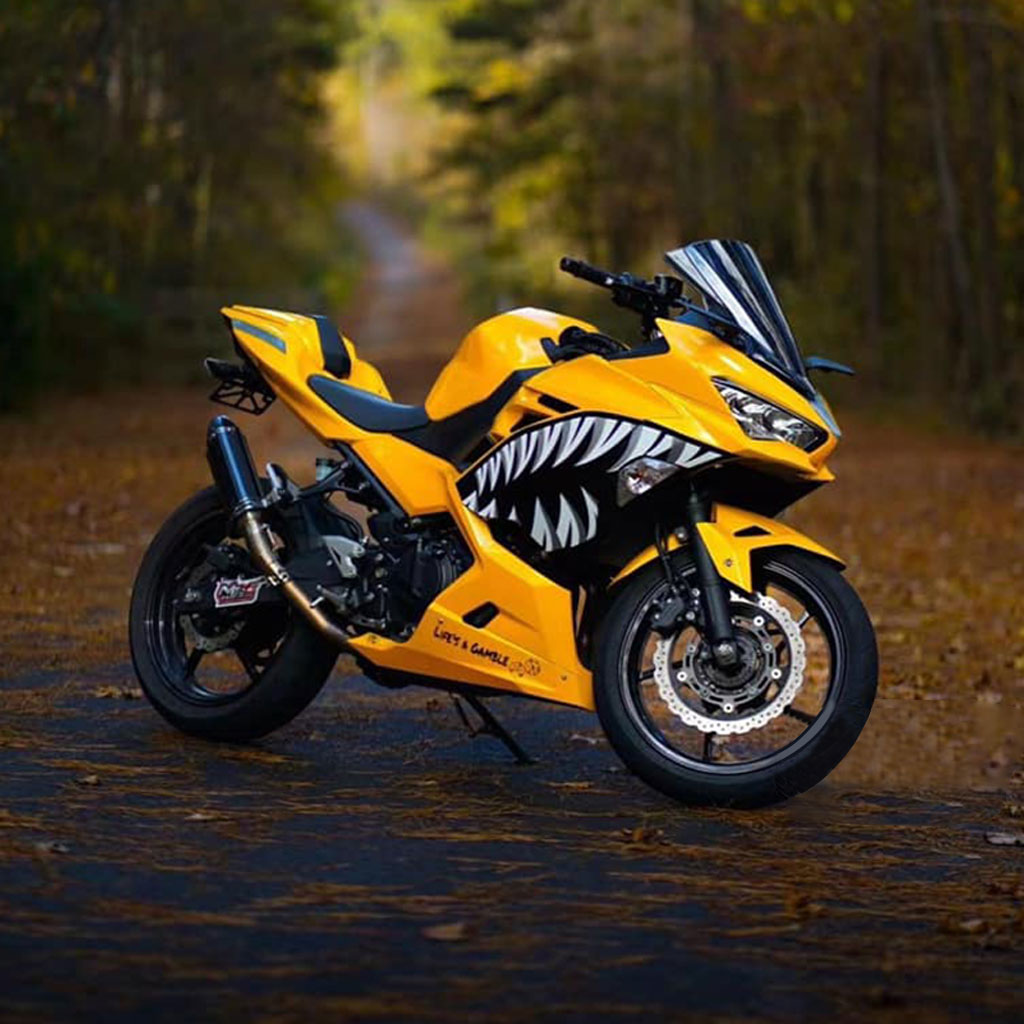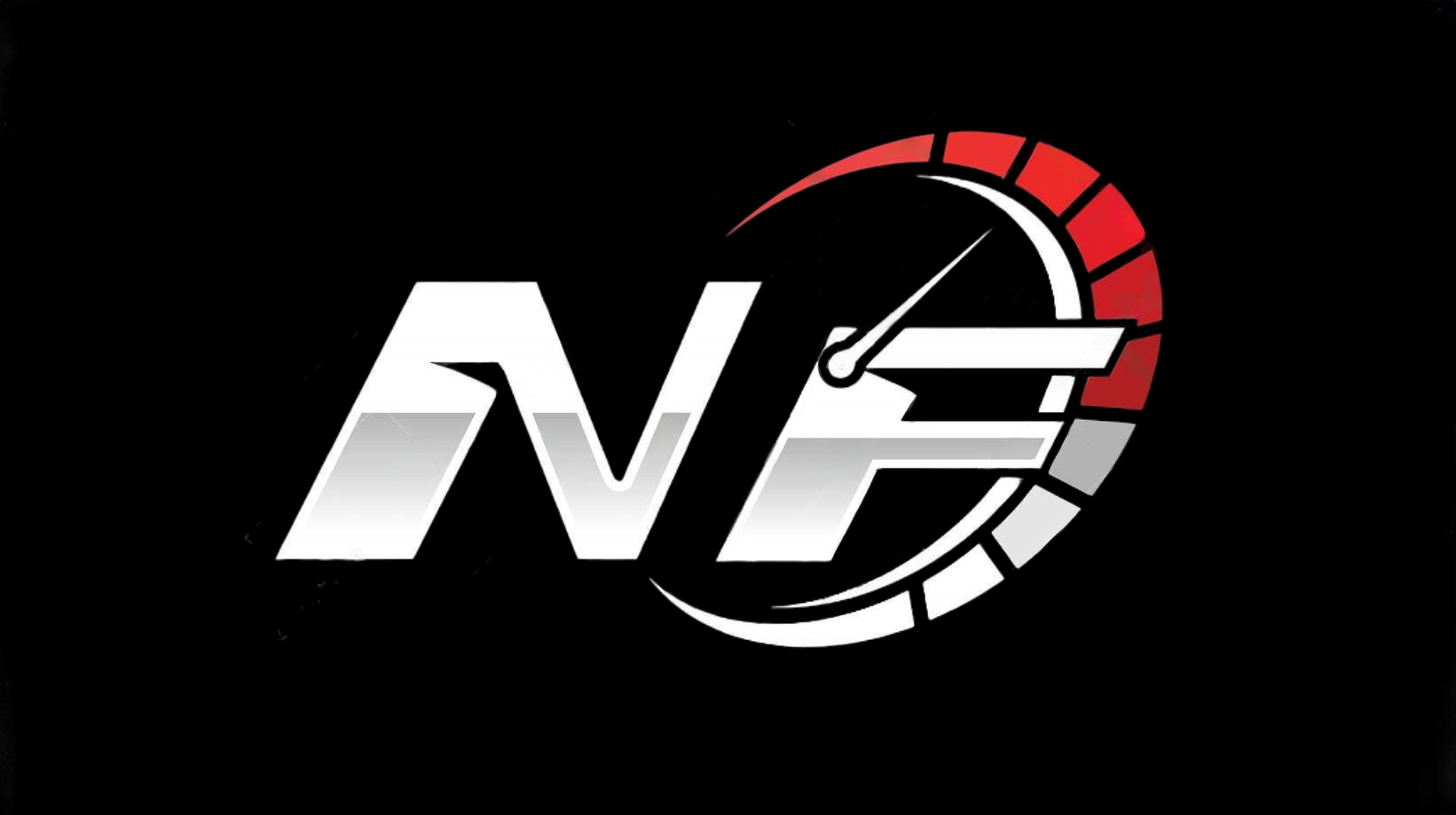Your Checklist for 2016 Ninja 650R Care and Upkeep
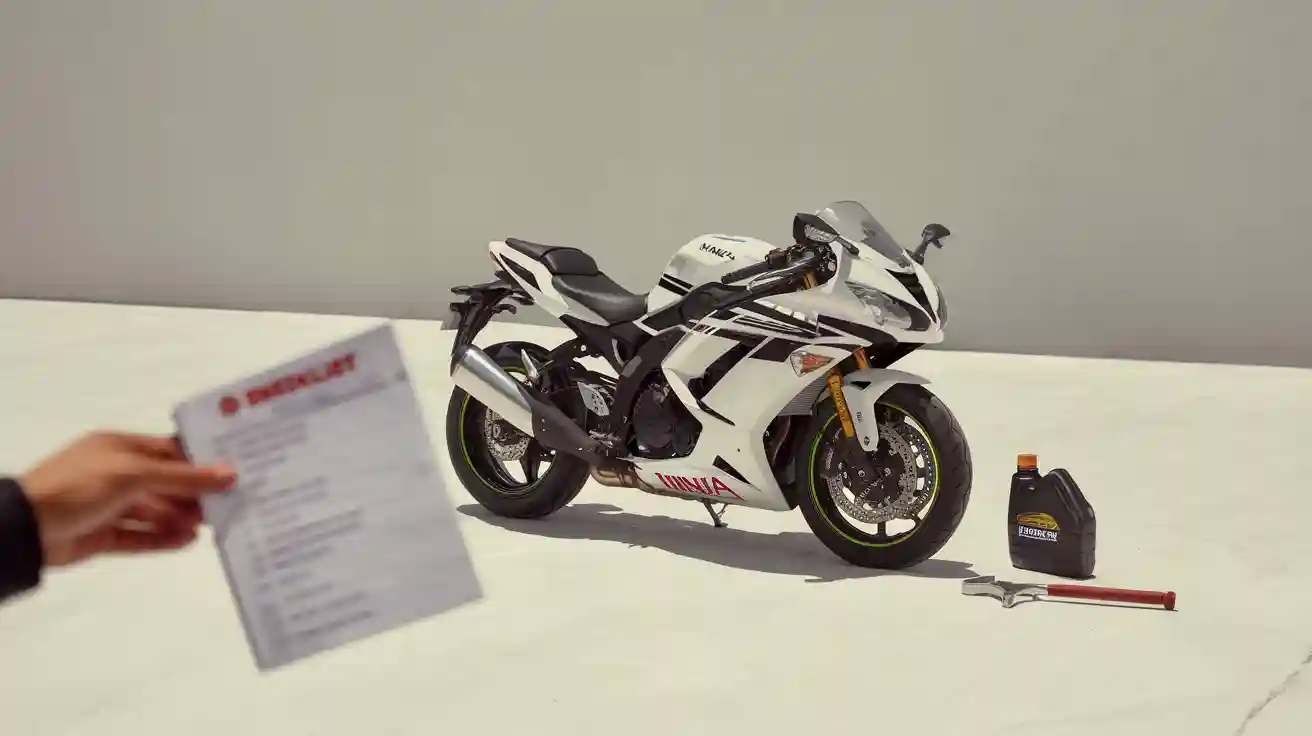
You want your ninja 650r 2016 to run at its best every time you ride. Regular kawasaki ninja maintenance keeps your motorcycle in top shape and helps you feel confident on the road. When you take care of your kawasaki, you improve both safety and performance. Many riders skip common maintenance tasks, but your kawasaki deserves better. Give your kawasaki ninja 650 the attention it needs for true longevity. A well-maintained kawasaki motorcycle rewards you with smooth rides and lasting performance. Your ninja stays reliable when you put kawasaki ninja maintenance first.
Ninja 650R 2016 Oil Change and Maintenance Schedule
When to Change Oil and Filter
You want your ninja 650r 2016 to run strong every time you ride. Sticking to a regular maintenance schedule helps you avoid engine trouble and keeps your motorcycle happy. Kawasaki recommends changing the oil and filter every 3,000 to 7,000 miles. If you ride in tough conditions, like heavy traffic or dusty roads, you should change the oil closer to 3,000 miles. If you mostly cruise on highways, you can wait until 7,000 miles. Oil changes are one of the most important steps for optimal engine performance and long-term reliability.
Tip: Mark your calendar or set a reminder on your phone after each oil change. This way, you never miss a maintenance milestone.
How to Check Oil Level on Kawasaki Ninja 650
Checking your oil level is quick and easy. Park your motorcycle on level ground and let the engine cool for a few minutes. Find the oil sight glass on the right side of your kawasaki. Stand the bike upright and look at the sight glass. The oil should sit between the upper and lower marks. If the oil is low, add more until it reaches the right level. Always use a clean rag to wipe away any dirt before you open the oil cap. This simple check helps you spot leaks or problems early and keeps your ninja running smoothly.
Choosing the Right Oil for Ninja 650R 2016
Picking the right oil makes a big difference in your kawasaki’s performance. For the ninja, SAE 10W-40 engine oil is the top choice. Many riders prefer synthetic 10W-40 oil because it protects your engine in hot and cold weather. Synthetic oil also lasts longer and helps your motorcycle stay strong during long rides. When you use the right oil and change the filter on time, you give your kawasaki the best chance for a long life.
Kawasaki Ninja 650 Tire Maintenance
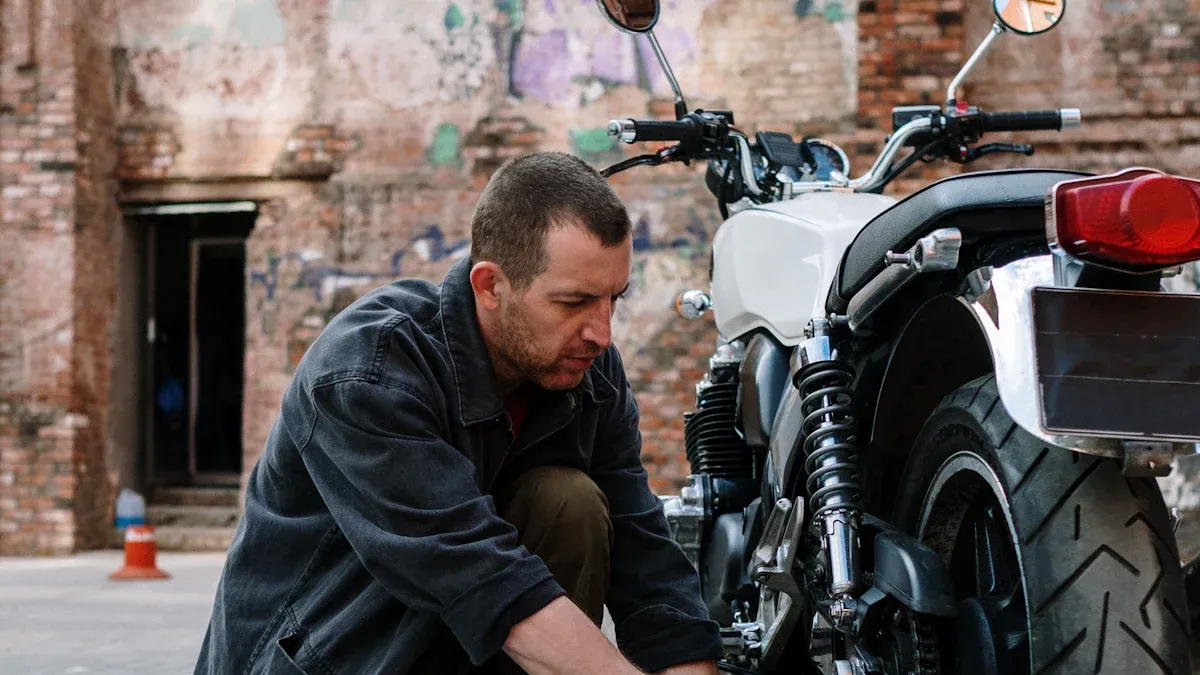
Checking Tire Pressure and Condition
You want your ninja to grip the road and handle well. Good tire maintenance starts with checking the pressure. Use a reliable gauge to check the tire pressure before every ride. Look for the recommended PSI in your kawasaki owner’s manual or on the swingarm sticker. If the pressure is too low or too high, adjust it. Low pressure can make your motorcycle feel sluggish. High pressure can reduce grip and comfort. While you check the pressure, look at the tire for cracks, cuts, or bulges. These signs mean you need a closer inspection or even a replacement.
Tip: Check tire pressure when the tires are cold. Warm tires can give a false reading.
Inspecting Tread and Wear on Kawasaki Tires
Tread helps your ninja stay safe, especially in wet weather. Run your hand over the tread and look for uneven wear. Use a penny or tread depth gauge to measure the grooves. If you see the tread is worn down to the wear bars, it’s time to think about new tires. Uneven wear can mean you need to check your alignment or suspension. Well-maintained tires help your kawasaki ninja 650 keep its strong performance and smooth ride.
| Tread Depth | Action Needed |
|---|---|
| 4mm+ | Good to go |
| 2-3mm | Monitor closely |
| <2mm | Replace tire soon |
When to Replace Tires on Ninja 650R 2016
You should never ignore old or damaged tires. If you see deep cracks, bald spots, or cords showing, replace the tire right away. Most riders need new tires every few years, even if the tread looks okay. Rubber gets hard and loses grip over time. For the ninja 650r 2016, regular tire maintenance keeps you safe and boosts your motorcycle’s performance. Always choose quality tires for your kawasaki. A fresh set of tires makes every ride feel new.
Remember, your ninja deserves the best. Stay on top of tire maintenance for a safer, smoother ride.
Kawasaki Ninja Maintenance for Brake System
Inspecting Brake Pads and Rotors
You want your ninja to stop safely every time you ride. A well-maintained brake system gives you confidence on the road. Make brake system inspection part of your regular routine. Kawasaki recommends you check the brake pads daily or during short-term checks. You should inspect the whole brake system and test the brake operation at least once a year. The manufacturer does not give a set interval for checking the rotors, but you should look at them whenever you check the pads.
| Component | Recommended Inspection Interval |
|---|---|
| Brake system | Annually |
| Brake operation | Annually |
| Brake pads (wear check) | Daily or during short-term regular checks |
| Brake rotors | No specific interval provided |
When you look at the pads, check for thin or uneven wear. If you see grooves or warping on the rotors, it is time to get them checked by a professional. Keeping your kawasaki ninja 650 in top shape means you never skip these steps.
Checking and Replacing Brake Fluid
Brake fluid plays a big role in your motorcycle’s stopping power. Old or dirty fluid can hurt your ninja’s performance. Check the fluid level in the reservoir and make sure it sits between the upper and lower marks. If the fluid looks dark or cloudy, you should replace it. Use the type of brake fluid listed in your kawasaki manual. Always clean the area around the cap before you open it. This keeps dirt out of your brake system. Fresh fluid helps your ninja respond quickly when you squeeze the lever.
Tip: Change your brake fluid every one to two years for the best results.
Recognizing Signs of Brake Wear
You can spot brake problems early if you know what to look for. Listen for squeaking or grinding noises when you use the brakes. If you feel a soft lever or notice your motorcycle takes longer to stop, check the pads and fluid right away. Vibrations or pulsing in the lever can mean warped rotors. Never ignore these signs. Quick action keeps your kawasaki safe and protects your performance. Regular maintenance helps you catch small issues before they become big problems.
Chain and Sprocket Maintenance for Kawasaki Ninja 650
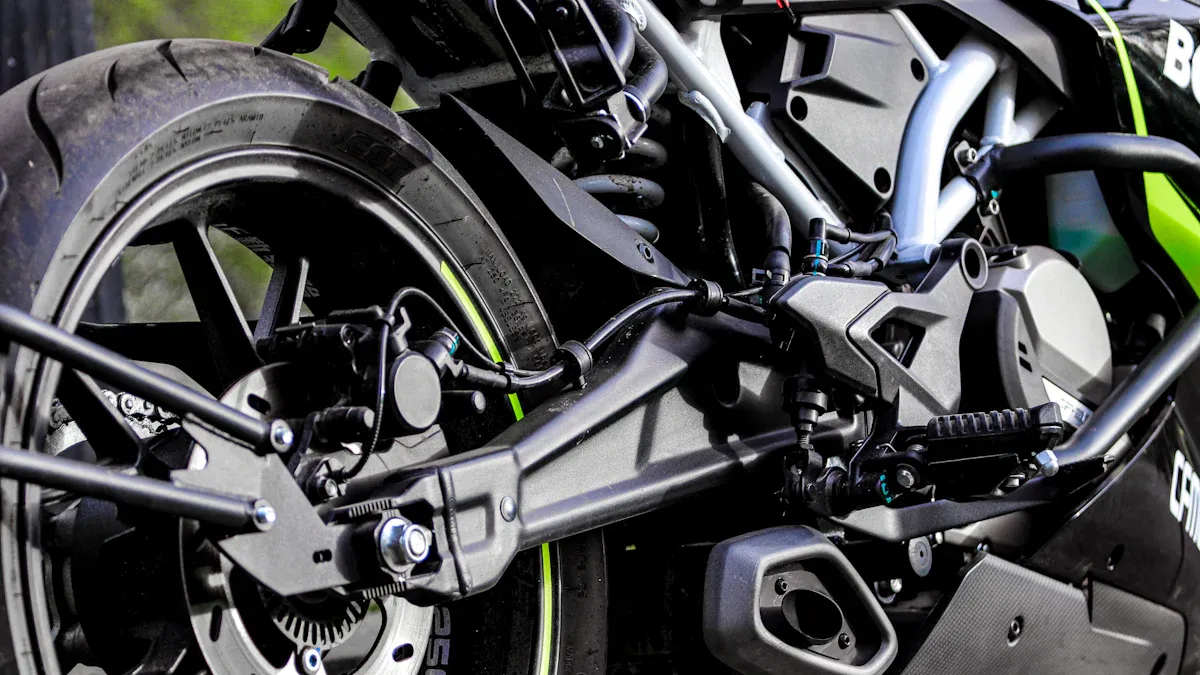
Cleaning and Lubricating the Chain
You want your ninja to run smooth and quiet. A clean chain helps your motorcycle last longer and ride better. Dirt and old grease can build up fast, especially if you ride in rain or on dusty roads. Use a soft brush and a chain cleaner to scrub away grime. Wipe the chain dry with a rag. After cleaning, spray on a good motorcycle chain lube. Make sure you cover the whole chain, but don’t use too much. Too much lube can attract dirt. Clean and lube your chain every 500 miles or after riding in wet weather. This simple step keeps your kawasaki in top shape.
Tip: Spin the rear wheel while you lube the chain. This helps you reach every link.
Adjusting Chain Tension on Ninja 650R 2016
A loose or tight chain can cause problems for your ninja. You want the right amount of slack for safe and smooth riding. For your kawasaki ninja 650, the chain slack should be between 10mm and 20mm. Use a ruler to measure the up-and-down movement at the middle of the chain. If you need to adjust it, grab your tools and follow these steps:
- Loosen the rear axle nut with a 27mm socket.
- Use 12mm wrenches to turn the adjuster bolts on both sides.
- Check the slack again until it sits between 10mm and 20mm.
- Tighten the axle nut to 80 ft/lbs.
Here’s a quick checklist for chain tension:
- 10mm–20mm slack
- 22mm and 27mm sockets
- 12mm wrenches
- Tighten axle nut to 80 ft/lbs
Keeping the right tension helps your chain and sprockets last longer.
Inspecting Sprockets for Wear
Don’t forget to check your sprockets when you look at the chain. Worn sprockets can hurt your kawasaki’s performance and make the chain wear out faster. Look for hooked or sharp teeth. If you see any teeth that look thin or bent, it’s time to replace the sprocket. Good chain and sprocket care means you get more miles from your ninja and avoid sudden breakdowns. Make sprocket checks part of your regular maintenance routine.
A healthy chain and sprocket set keeps your kawasaki ninja 650 running strong and safe on every ride.
Air Filter Checks for Kawasaki Ninja 650R 2016
How Often to Inspect the Air Filter
Your ninja needs clean air to run its best. The air filter keeps dust and dirt out of your engine. If the filter gets clogged, your kawasaki can lose power and use more fuel. You might wonder how often you should check the air filter. The owner's manual for the ninja 650R 2016 focuses on air filter replacement every 11,250 miles (18,000 km). It does not give a set schedule for inspection. Still, you should look at the air filter more often if you ride in dusty or dirty places. Checking the air filter during regular maintenance helps you spot problems before they get worse.
Tip: If you ride on gravel roads or in heavy traffic, check the air filter every few months. Clean air means a happy engine!
Cleaning or Replacing the Air Filter
You can keep your ninja running strong by taking care of the air filter. Start by removing the seat and opening the air box. Take out the filter and hold it up to the light. If you see a lot of dirt or the filter looks dark, it is time to clean or replace it. Some filters can be cleaned with gentle air or a special cleaner. Others need a full air filter replacement. Always use the right type for your kawasaki. Put the clean or new filter back in place and close the air box tightly.
- Use a soft brush or low-pressure air to clean reusable filters.
- Replace paper filters if they look dirty or damaged.
- Make sure the filter fits snugly before you ride.
A fresh air filter helps your ninja breathe easy and keeps your rides smooth.
Coolant System Care for Kawasaki Ninja 650
Checking Coolant Level and Condition
You want your ninja to stay cool and run at its best. The coolant system check is a simple step that helps you avoid engine trouble. Start by parking your kawasaki on level ground. Let the engine cool down before you open anything. Look for the coolant reservoir under the seat or near the engine. The reservoir has marks for "Full" and "Low." Make sure the coolant sits between these lines. If it looks low, add more until it reaches the right spot.
Check the color of the coolant. Fresh coolant looks bright green or blue. If you see rust, dirt, or a brown color, you need to change it. Dirty coolant can hurt your engine’s performance. You should also look for leaks around hoses and the radiator. If you spot any wet spots or drips, fix them right away.
Tip: Always use the type of coolant listed in your kawasaki manual. Mixing types can cause problems.
Flushing and Replacing Coolant
You need to flush and replace the coolant every two years or 24,000 miles. This keeps your ninja’s engine safe from overheating. To flush the system, remove the drain bolt at the bottom of the radiator. Let the old coolant drain into a pan. Put the bolt back and fill the system with fresh coolant. Run the engine for a few minutes, then check the level again. Top off if needed.
Here’s a quick checklist for coolant maintenance:
- Check level and color every few months
- Flush and replace every two years
- Use only approved coolant
Regular coolant care keeps your kawasaki running smooth and strong. Good maintenance helps your ninja deliver top performance on every ride.
Electrical System Checks on Ninja 650R 2016
Inspecting the Battery
You want your ninja to start every time you turn the key. A healthy battery makes this possible. Start by looking at the battery terminals. Make sure they look clean and tight. If you see white or green powder, clean it off with a brush. Check the battery case for cracks or leaks. If you spot any, replace the battery right away. Use a voltmeter to test the voltage. A good battery should show around 12.6 volts when the bike is off. If the reading drops below 12 volts, your battery may need charging or replacing.
Tip: Batteries can lose charge if you leave your kawasaki parked for a long time. Use a trickle charger to keep it ready for your next ride.
Here are some common electrical issues and what causes them:
| Electrical Issue | Causes | Symptoms / Effects |
|---|---|---|
| Dead Battery | Battery charge depletion; battery electrolyte loss due to overcharging or heat; battery age | Bike clicks at startup but does not crank; frequent battery dying; no power to ignition and starter |
| Battery Charging Problems | Faulty regulator/rectifier causing overcharging; overheating due to placement under seat | Electrolyte boiling off leading to battery failure; battery dies frequently |
Checking Lights and Signals
Lights and signals keep you safe on the road. Turn on your kawasaki and check the headlight, tail light, brake light, and turn signals. Walk around your bike and watch each light as you flip the switches. If a bulb does not light up, replace it before your next ride. Sometimes, a loose wire or a blown fuse can cause problems. Make sure all lights shine bright and steady. Dim or flickering lights can mean your battery or charging system needs attention.
🚦 Always check your lights before riding at night or in bad weather.
Examining Fuses and Wiring
Fuses protect your ninja’s electrical system from damage. You can find the fuse box under the seat. Open the cover and look for any blown fuses. A blown fuse will have a broken wire inside. Replace it with one that has the same rating. While you are there, check the wiring for cracks, cuts, or loose connections. Worn wires can cause strange problems, like the engine not starting or lights not working.
Some common electrical issues come from faulty starter relays, side stand switches, or wiring problems. If your bike clicks but does not start, or if the engine will not crank, check these parts. Regular maintenance helps you catch these problems early and keeps your kawasaki running strong.
Additional Kawasaki Ninja 650 Maintenance Tips for Longevity
Proper Storage for Ninja 650R 2016
You want your ninja 650r 2016 to stay in great shape, even when you are not riding. Good storage protects your bike from weather, dust, and damage. Always park your kawasaki in a dry, covered spot. If you have a garage, use it. No garage? A quality motorcycle cover works well. Before you store your ninja, clean it and check the tire pressure. Fill the gas tank and add a fuel stabilizer. This keeps the fuel fresh. Disconnect the battery if you plan to store your bike for more than a month. Store the battery in a cool, dry place.
🛡️ Tip: Lift the bike on a stand to prevent flat spots on the tires during long storage.
Keeping a Maintenance Log
A maintenance log helps you remember what you have done and what comes next. Write down every oil change, tire swap, and brake check. You can use a notebook or a digital app. Here is a simple table you can copy:
| Date | Service Performed | Mileage | Notes |
|---|---|---|---|
| 04/2024 | Oil & filter change | 8,500 | Used 10W-40 |
| 05/2024 | Chain cleaned & lubed | 9,000 | After rain ride |
Keeping track of common maintenance tasks makes it easy to spot patterns or problems. You will never forget when your next service is due.
Regular Visual Inspections
Quick checks can catch small issues before they turn into big problems. Walk around your ninja before each ride. Look for leaks, loose bolts, or worn parts. Check the lights, brakes, and tires. If you see anything odd, fix it right away. These simple inspections help you avoid surprises and keep your kawasaki running strong.
Regular visual checks are one of the easiest ways to keep your bike safe and reliable.
Consistent care keeps your 2016 Ninja 650R running strong and fun to ride. When you follow this checklist, you spot problems early and keep your bike in top shape. You save money, avoid stress, and enjoy every mile.
Stay proactive! Your Ninja 650R will reward you with years of smooth, safe rides. 🏍️
FAQ
How often should you change the oil on your Ninja 650R 2016?
You should change the oil every 3,000 to 7,000 miles. If you ride in heavy traffic or dusty areas, stick to the lower end. Always check your oil level often for the best results.
What tire pressure does your Ninja 650R 2016 need?
Check your owner’s manual or the swingarm sticker. Most riders use 36 PSI for the front tire and 42 PSI for the rear. Always check pressure when the tires are cold.
How do you know when your battery needs replacing?
If your bike struggles to start, or the lights look dim, your battery may be weak. Use a voltmeter. If it reads below 12 volts, you should replace or charge the battery.
What should you do before storing your Ninja 650R for winter?
Clean your bike, fill the gas tank, and add fuel stabilizer. Disconnect the battery and store it in a cool, dry place. Cover your bike to protect it from dust and moisture.
Can you use any chain lube on your Ninja 650R?
Use a motorcycle-specific chain lube. Regular sprays or oils can attract dirt and wear out your chain faster. A good chain lube keeps your ride smooth and quiet. 🛠️
See Also
Comprehensive Analysis of Ninja 650 Kawasaki Fairing Performance
A New Rider’s Handbook For Motorcycle Maintenance Basics
Top Six Stylish Motorcycles Recommended For Beginners In 2025
